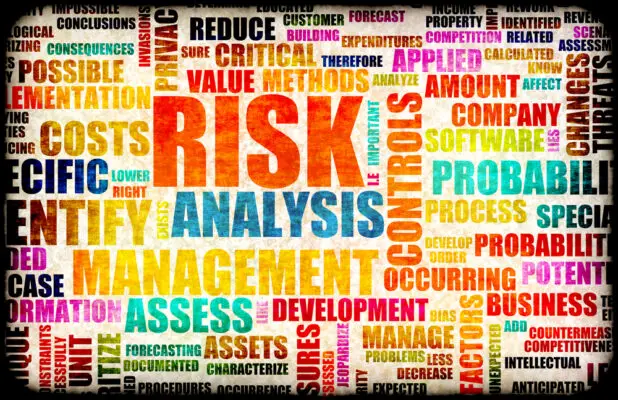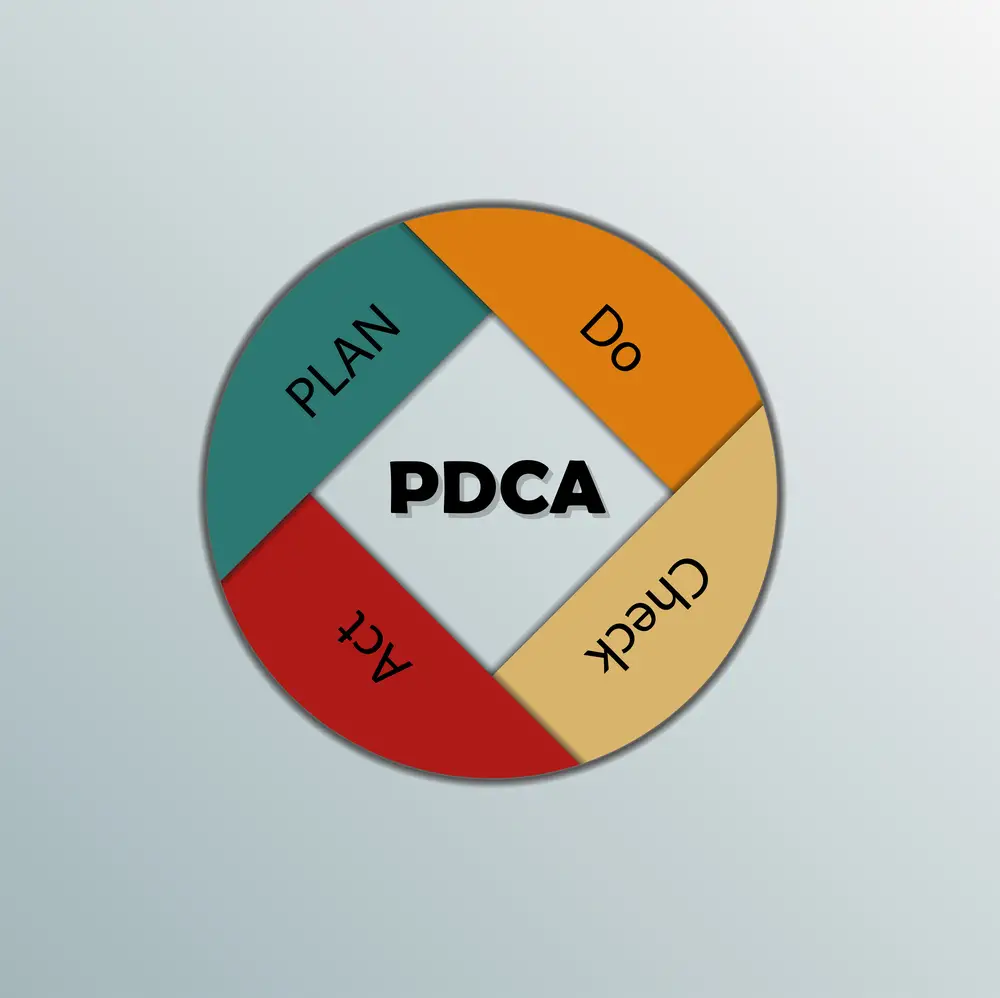Risk management is at the heart of the spiral lifecycle software development model designed here, which sets it apart from other software development methodologies.
It is an integral part of every iteration or phase of the software project now, impacting software design and making it a proactive approach rather than a reactive one. Let’s delve into the details of how risk is managed in this model and software project repeatedly passes.
Risk Identification: This is the spiral model’s initial phase of risk assessment and management. In each iteration, the first step is to identify potential risks. These could be operational, technical, or external.
Operational risks could include potential team changes or miscommunications. Technical risks could involve technology malfunctions or the use of untested technology. External risks could arise from changes in market conditions or regulatory laws.
The process of risk identification involves all project stakeholders to ensure a comprehensive understanding of potential risks.
Risk Analysis: After identifying potential risks, the next step is to analyze them. This analysis includes determining the likelihood of each risk occurring and the potential impact on the project if it does occur.
Risks are typically categorized as high, medium, or low priority based on these risk factors themselves. This prioritization helps guide the team’s focus on the most significant risks

What is Construction Schedule Risk Analysis Software?
Risk** Evaluation**: Once the risks have been analyzed, they are evaluated to decide which risks to address in the current iteration of the spiral. The risks are evaluated based on their priority and the project’s current phase. Sometimes, addressing certain risks in later spirals may be more efficient.
Risk Mitigation: After evaluation to assess risks, the next step is to devise strategies to mitigate the identified risks. This could involve taking preventive measures to reduce the likelihood of the risk occurring, creating contingency plans to handle the risk if it does occur, or accepting the risk if it cannot be avoided or if the cost of mitigation exceeds the potential impact.
Risk Monitoring: Even after implementing a risk mitigation strategy, it is vital to monitor the risk continuously. This is because the likelihood and impact of risks can change over time as the engineering project progresses. Monitoring involves keeping an eye on the risk factors and adjusting the risk mitigation strategy if necessary.
Risk Communication: Throughout incremental development of all these steps, it is essential to maintain clear and consistent communication about risks. All project stakeholders should be kept informed about the identified risks of small projects, their potential impact, and the strategies for managing them.
As you delve into the world of software development, you’ll find that the Spiral Model plays a significant role in managing the lifecycle of projects.
It’s a risk-driven process model generator that’s used for multi-stakeholder projects. It combines aspects of the waterfall model for software engineering project and iterative models, emphasizing risk analysis.
Spiral Model in Software Development Life Cycle (SDLC): Phases, Explanations, Methodology
The Spiral Model is a commonly used software development life cycle (SDLC) prototyping model that incorporates design and prototyping-in-stages elements, making it an ideal choice for large, complex, and highly customized projects.
This model provides a systematic approach to building software products and comprises a spiral model consisting of four main phases: Identification, Design, Build, and Evaluation.Each phase is represented as a quadrant in the spiral, with iterations (or spirals) representing different levels of development.
You begin at the center of the spiral and progress outward, allowing for constant refinement and evolution of the software development process model.
Identification
In the Identification phase, you, the developers, must lay the foundation for the project. This involves gathering and defining the business requirements and developing an understanding of what the system should achieve. You’ll work closely with stakeholders to determine the next software project’s objectives, constraints, and system requirements.
Design
Después de la identificación inicial, el proyecto pasa a la fase de Diseño. Aquí, te centrarás en conceptualizar un diseño preliminar de software basado en los requisitos identificados.
Esta fase incluye evaluar el riesgo asociado con el proyecto y encontrar soluciones para mitigarlos. También trabajarás en crear un diseño de arquitectura de software más detallado y refinado que incluya planos arquitectónicos, ingenieros de software, diseño de bases de datos y diseño de interfaces de usuario.
Build
The Build phase is where the actual development of the software happens. Based on the design from the previous stage, the coding and testing take place. If any risk materializes during this phase, you must loop back to the design stage to reevaluate the design and identify alternative solutions and risk mitigation strategies.
Evaluation
In the Evaluation phase, the current iteration of the prototype software maintenance models the software is reviewed and assessed by stakeholders. They evaluate the system against the project objectives initial requirements to ensure that it aligns with the project’s objectives.
If any changes or improvements are needed, these are noted for inclusion in the next spiral. This feedback loop is crucial as it is customer feedback and allows you to continually refine and improve the software quality.
This four-phase cycle repeats in a “spiral” fashion, enabling continuous learning and refinement throughout the software development process. With each successive spiral, the whole software development model evolves, becoming more refined and closer to the final product.
The Spiral Model’s unique feature is its focus on risk analysis at every stage. It helps ensure that any potential risks are identified and mitigated early, preventing them from becoming significant issues that can derail the project.
Risk Handling in Spiral Model
Risk management is a critical component of the spiral model. It’s integrated into the fabric of the entire project lifecycleRisk analysis occurs during each iteration, ensuring potential problems are identified and mitigated before they affect the project.
This approach allows you to tackle risks proactively, reducing the likelihood of unexpected issues derailing your project.
Steps Involved in Spiral Model
Design Stage
The design stage is the second quadrant of the spiral model. In this phase of software process, you’ll establish the system requirements and create a preliminary design for your software. This might involve designing a database, a example creating user interfaces, or setting up network interfaces, among other tasks.
Evaluation and Risk Analysis
risk analysis phase is a cornerstone of the spiral model. Here, you’ll identify potential risks and devise strategies to manage them. These risks could be technical (like a new technology not working as expected), operational (such as a key team member leaving), or external (like changes in market conditions). You’ll evaluate these risks and develop contingency plans, ensuring you’re prepared for any eventuality.
Inception Stage
In the inception stage, the time consuming, first quadrant of the spiral model, you’ll develop the project’s initial concept. You’ll identify the software’s key objectives, requirements, and constraints. This stage sets the groundwork for the rest of the intermediate phases of the project, providing a clear vision of your goal.
Spiral Model Application
The Spiral Model can be applied in various scenarios within the software system development industry due to its flexibility and high risk-aversion characteristics. Here are some situations where the Spiral Model could be most beneficial:
Large-scale Projects: The Spiral Model is an excellent choice v model for large, complex projects. Its more iterative approach by nature allows for the gradual build-up of a system, starting with the most critical components. This method ensures that significant problems are discovered and addressed early in systems development lifecycle.
High-risk Projects: Given its focus on risk analysis at every iteration, the Spiral Model is ideal for projects with significant potential risks. These could include projects using new technologies, projects with uncertain requirements, or projects with high financial stakes.
Long-term Project Commitments: The Spiral Model is well-suited for projects where long-term commitments are made slowly. As the project progresses, clarity about the system requirements, resources, and risks increases, allowing for more accurate planning and forecasting.
User Engagement: Projects that require user engagement at every stage can benefit from the Spiral Model. As each of spiral model phases results in a working prototype, it provides an opportunity for user feedback and ensures that the final product aligns with user expectations.
Requirement Changes: In scenarios where requirements are not clear at the outset or likely to change during entire development process, the Spiral Model proves beneficial. It accommodates evolving requirements with each iteration of incremental model, making it a flexible option.
Research and Development (R&D) Projects: R&D projects often deal with lots of uncertainties and risks. The risk-driven nature of the Spiral Model makes it a good fit for such projects, as it provides a systematic total approaches to identifying, analyzing, and mitigating risks.
Despite its advantages, the Spiral Model is not a one-size-fits-all solution. It requires considerable expertise to identify and analyze risks correctly and can be costly due to its iterative nature.

A computer popup box screen warning of a system being hacked, compromised software enviroment. 3D illustration.
Possible Use Cases of Spiral Model
The spiral model is versatile, making it suitable for a variety of other software engineering and development projects. It’s particularly beneficial for large, large and complex projects, and mission-critical projects where risks must be managed carefully.
The model’s iterative nature allows for flexibility and adaptation, making it ideal for projects where requirements might change over time. Además, se pueden proporcionar PDFs descargables relacionados con la ingeniería y desarrollo de software a los interesados para una mejor comprensión y documentación.
Next Phase Planning
In the last quadrant of the spiral model, you’ll review the project, reflecting on what’s been accomplished and what needs to be done in the next iteration. This is the evaluation or validation phase, where you assess the software’s performance against the requirements set out in the inception stage or baseline spiral. From this evaluation, you’ll then plan the next advantages of the spiral, continuing the process of refinement unit testing and development.
Use of Spiral Model in Mobile Application Development Process
The mobile app development landscape is dynamic and complex, often characterized by rapidly evolving technologies, shifting user expectations, and time-to-market pressures.
Due to these factors, the Spiral Model has gained popularity in mobile application development.
Risk Management: Mobile app development projects often involve significant risks, such technical risks such as the use of new technologies or platforms, reliance on third-party services, or compliance with app store guidelines.
Prototyping: Mobile apps often require a high degree of user interaction, and user interface (UI) design is critical to the user experience. The Spiral Model allows for prototyping at each stage, enabling user feedback on the app’s UI and functionality.
Adapting to Changes: The mobile app market is fast-paced, and user requirements can change rapidly. The Spiral Model’s flexibility makes it easy to accommodate changes in requirements at any stage of development.
Testing: The Spiral Model’s iterative nature allows for testing at each stage of software development process. Early testing and detection of issues can save significant time and resources later in the software development project.
This is particularly important for mobile apps, where performance issues can lead to negative user reviews and impact the app’s success.
Product Release and Updates: The Spiral Model facilitates the launch of the initial app (after a few iterations) to the market while continuing to work on improvements and additional features in subsequent spirals.
Mobile application development is a rapidly evolving field, with new technologies and user expectations continually shifting.
The spiral model’s emphasis on risk management and its iterative software development process model makes it well-suited to this dynamic environment.

Conclusion
In conclusion, the spiral model offers a structured yet flexible approach to software development. Its emphasis on risk management and continuous improvement and refinement makes it a valuable tool for managing complex projects.
However, it requires careful planning and management to identify and mitigate risks effectively. When used correctly, it can help you deliver high-quality software that meets the needs and expectations of your stakeholders.

Chris Ekai is a Risk Management expert with over 10 years of experience in the field. He has a Master’s(MSc) degree in Risk Management from University of Portsmouth and is a CPA and Finance professional. He currently works as a Content Manager at Risk Publishing, writing about Enterprise Risk Management, Business Continuity Management and Project Management.

